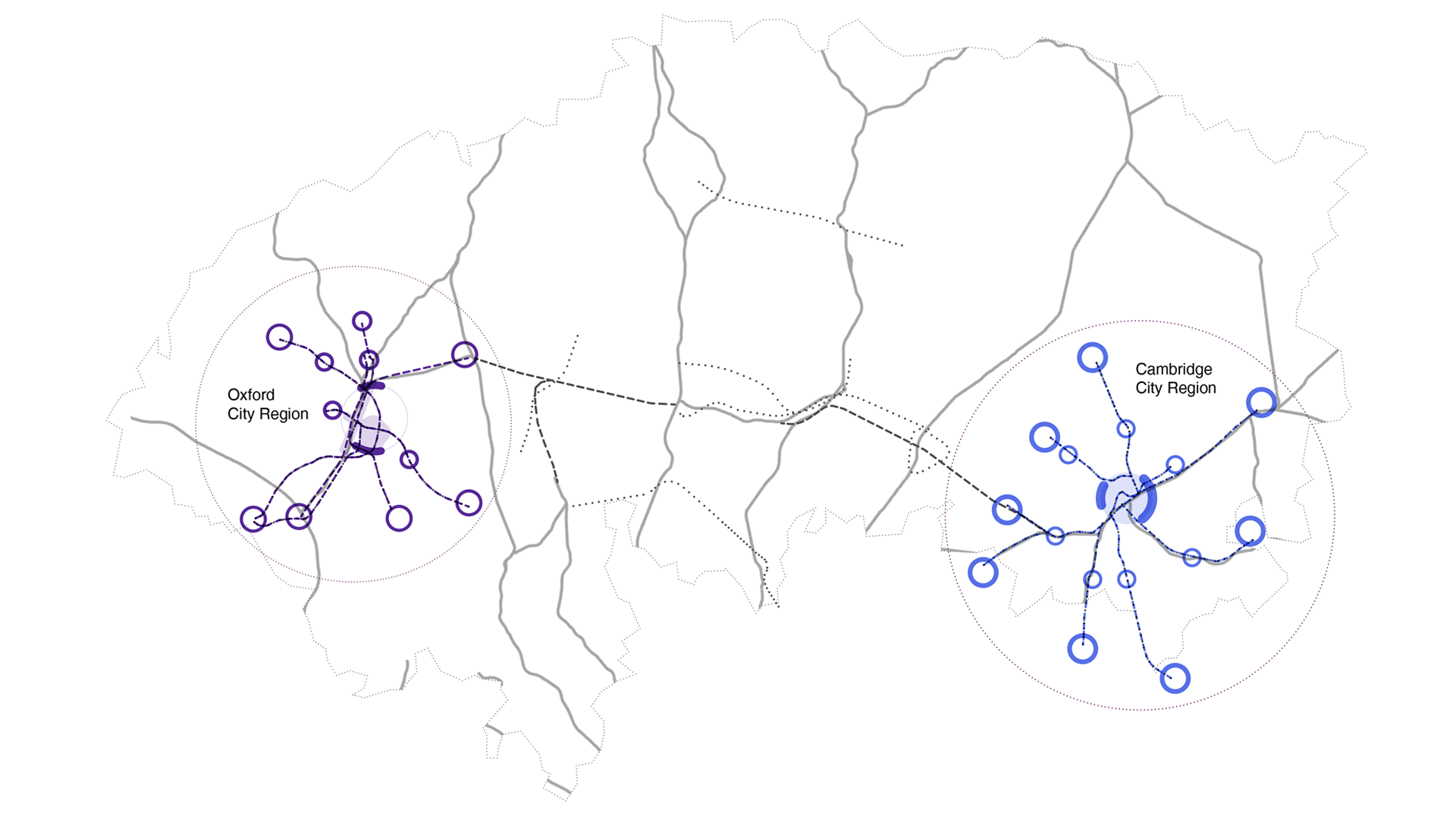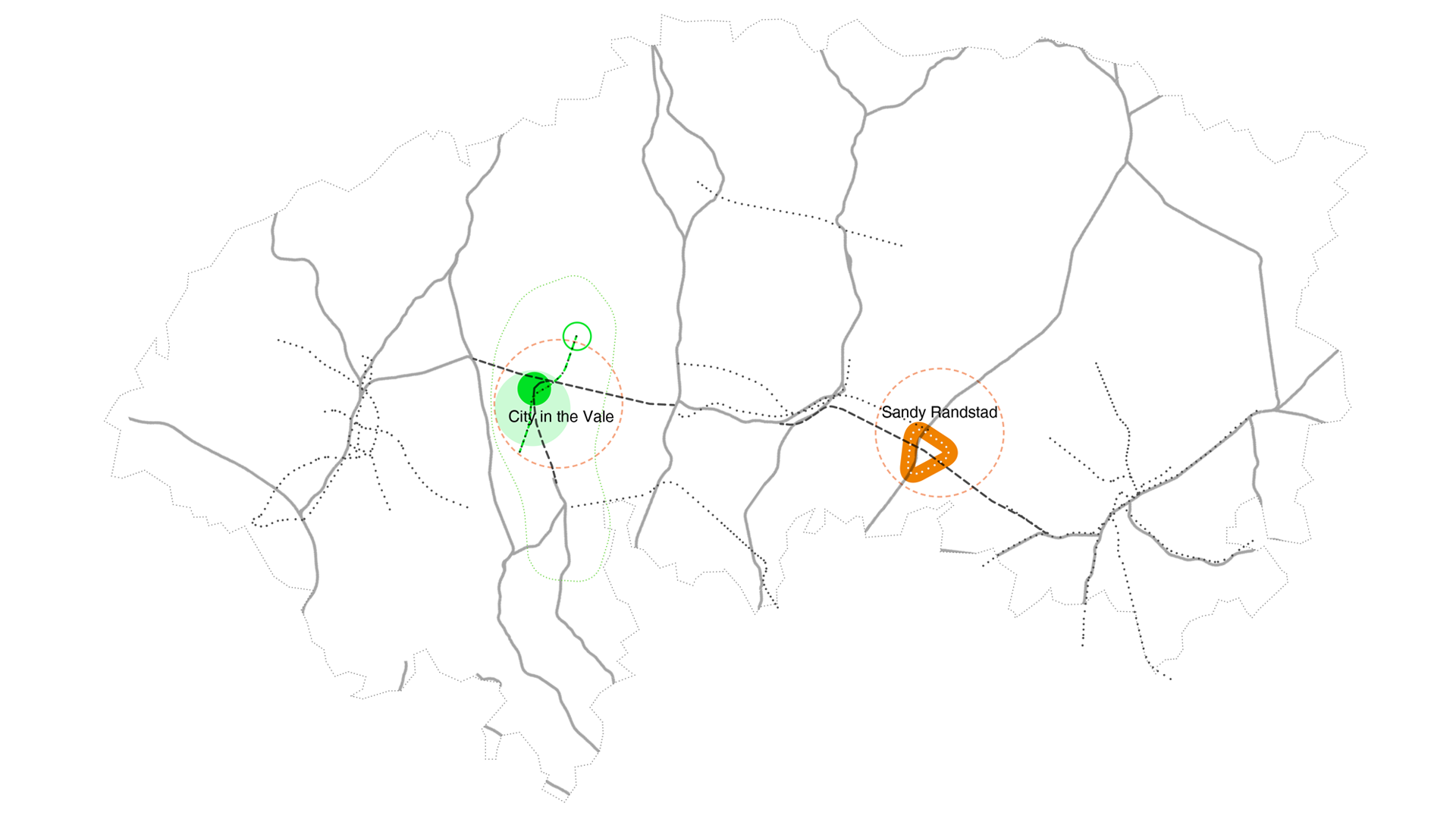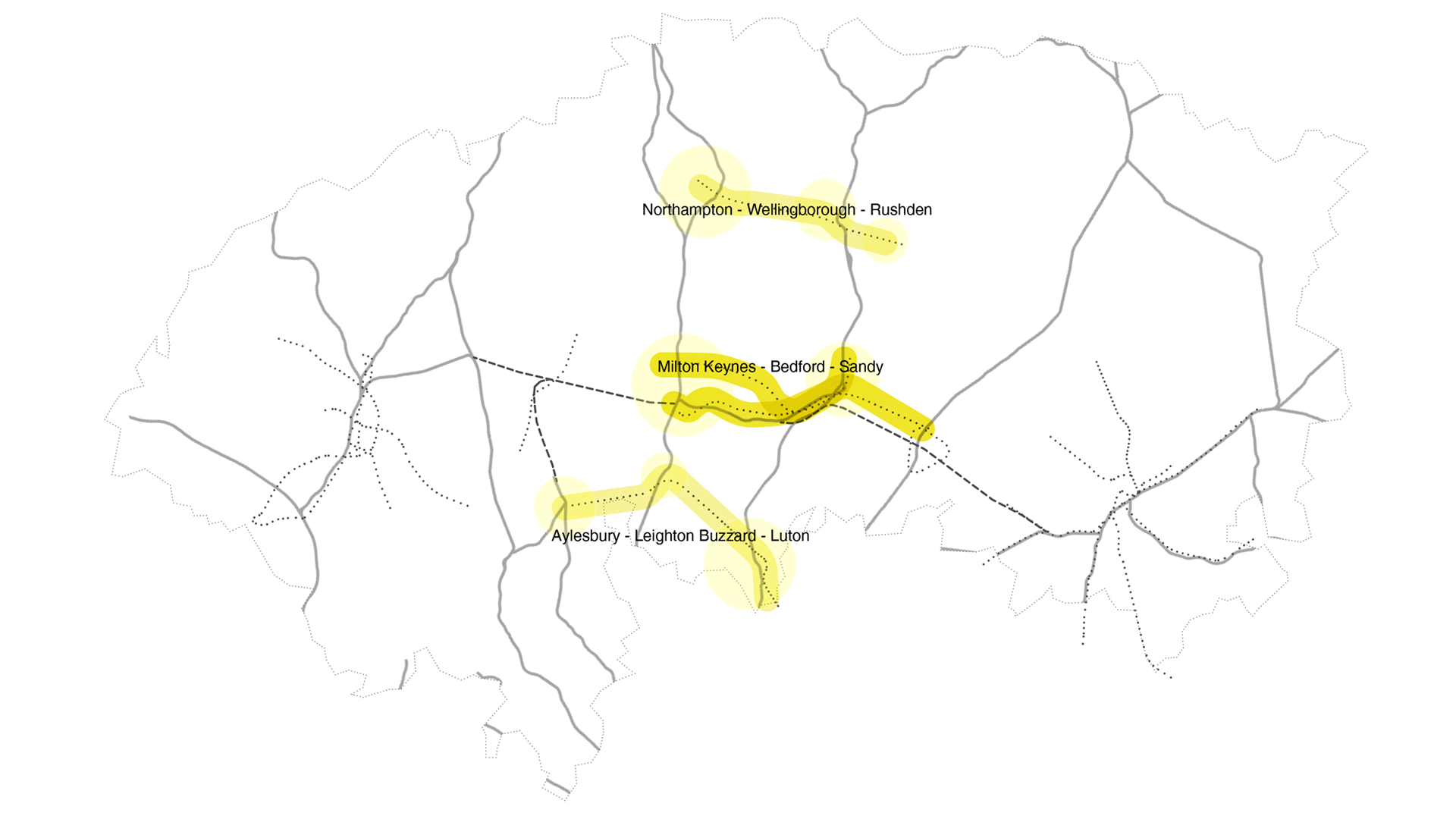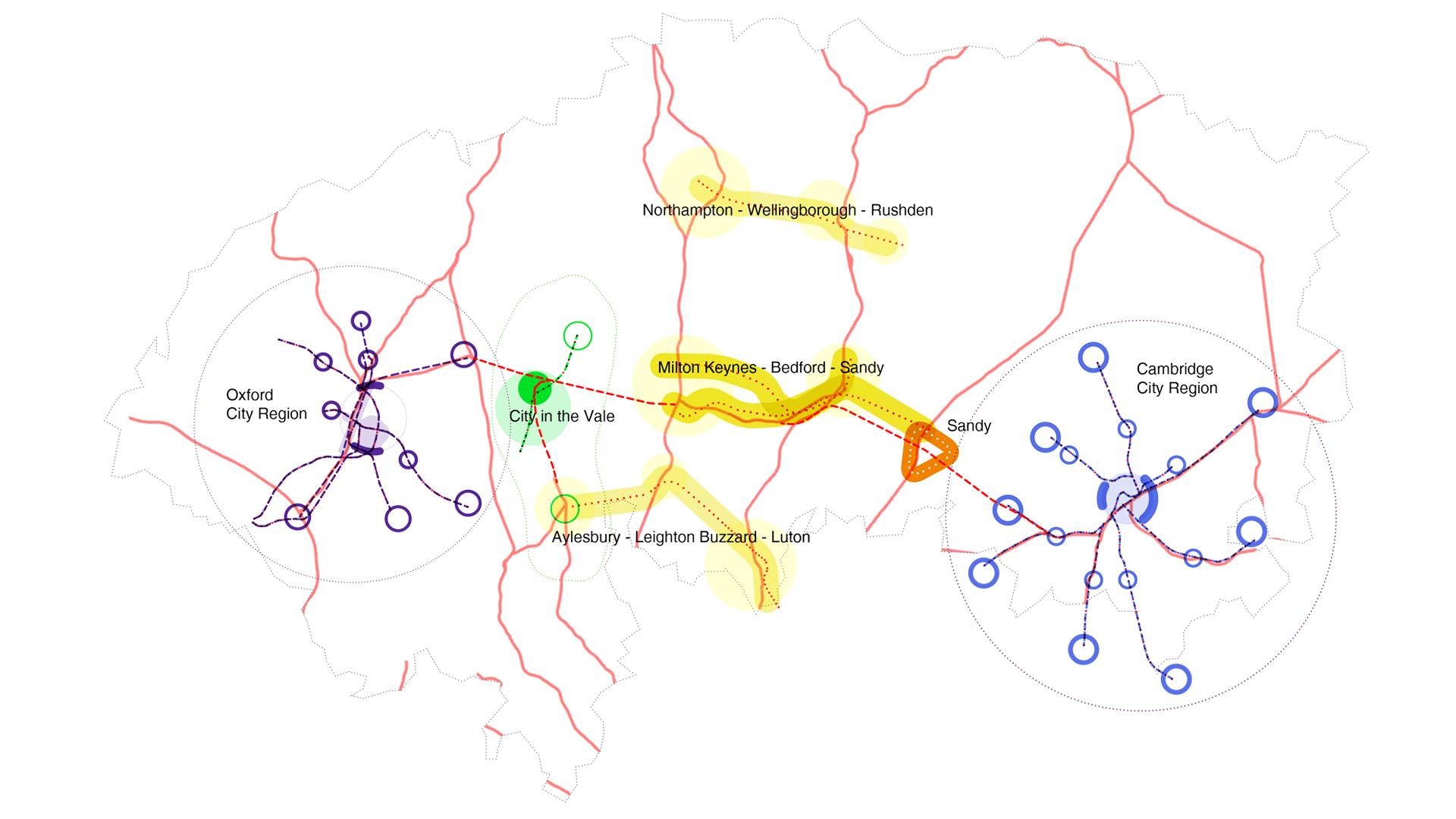Horizontal integration of urban tissue beyond the immediate urban cores can provide a strategy to relief the pressure on congested transport infrastructures and overheated metropolitan centres. It can create independent growth opportunities for networks of small and medium-sized cities and regions. 5th Studio’s work – comprehensive and with great attention to local originality – offers a framework for the region’s development and manages to describe a path to sustainable growth. Even more, the study displays a set of coordinated development options for infrastructure and settlement, that can be used as a blueprint for similar considerations in comparable regions of Europe.
The Oxford-Milton Keynes-Cambridge Arc is a 100-mile line of towns and cities experiencing rapid growth beyond London’s green belt. The Arc is bookended by two world-class universities and also contains a significant ecology of educational institutions and leading science and innovation research and development.













